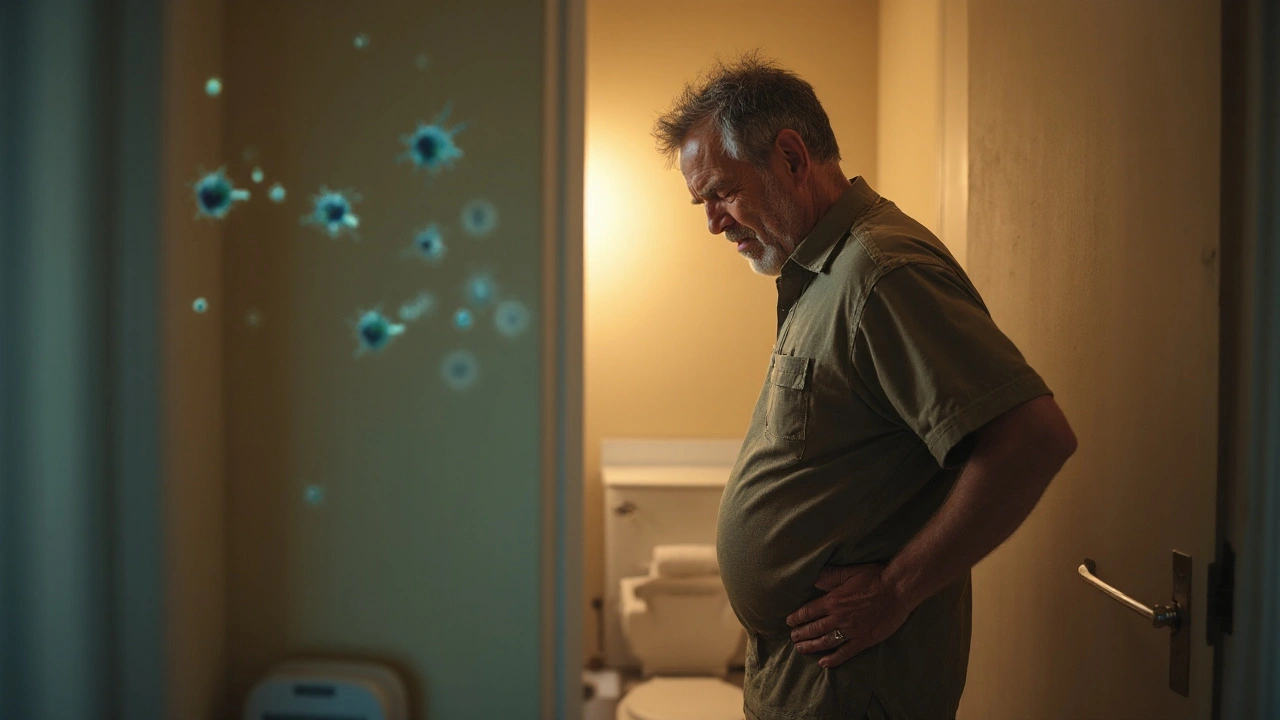Prostate Enlargement: What It Is and How to Deal With It
If you’ve noticed more trips to the bathroom, a weak stream, or a feeling that your bladder isn’t emptying fully, you might be facing prostate enlargement, also called benign prostatic hyperplasia (BPH). It’s a common condition for men over 40, and the good news is that most cases are manageable with lifestyle tweaks and, if needed, medication.
What Is Prostate Enlargement?
The prostate sits just below the bladder and wraps around the urethra. As men age, the gland often grows a bit, squeezing the urethra and causing urinary symptoms. This growth isn’t cancer—it’s a benign change in the tissue. Typical signs include frequent urination, especially at night, urgency, a weak or intermittent stream, and a sense of incomplete emptying.
While genetics play a role, diet, hormone levels, and inflammation also affect how quickly the prostate enlarges. Men with a family history of BPH or those who are overweight tend to notice symptoms earlier.
How to Manage and Reduce Symptoms
First off, see a doctor for a proper exam. Simple tests like a prostate‑specific antigen (PSA) blood test and a urine flow study can pinpoint the issue and rule out infection or cancer.
If the doctor confirms BPH, here are practical steps you can start right away:
- Watch Your Fluids. Limit caffeine and alcohol, especially in the evening. They irritate the bladder and make night‑time trips more likely.
- Stay Active. Regular walking or light cardio helps keep the bladder muscle tone good and can reduce prostate swelling.
- Eat Prostate‑Friendly Foods. Tomatoes, berries, nuts, and fish rich in omega‑3s have anti‑inflammatory properties. Cutting back on red meat and high‑fat dairy can also help.
- Practice Timed Voiding. Train your bladder by going every 3‑4 hours, even if you don’t feel the urge. This can improve bladder capacity over time.
- Talk About Medications. Alpha‑blockers (like tamsulosin) relax the prostate muscle, while 5‑alpha‑reductase inhibitors (like finasteride) shrink the gland. Your doctor will decide what’s right based on symptom severity.
For men with moderate to severe symptoms, minimally invasive procedures—such as transurethral microwave therapy or laser ablation—can relieve blockage without major surgery. These are usually outpatient, with quick recovery.
Don’t forget mental health. Frequent bathroom trips can be stressful and affect sleep. Simple relaxation techniques, good sleep hygiene, and a supportive conversation with your partner can make a big difference.
In short, prostate enlargement is common and often harmless, but the symptoms can be frustrating. By staying informed, making diet and lifestyle changes, and working with a healthcare professional, you can keep the condition under control and enjoy a better quality of life.
Got more questions? Browse our articles on related topics—like the latest on prostate‑specific supplements or how to choose the right medication—for deeper insight and up‑to‑date advice.

